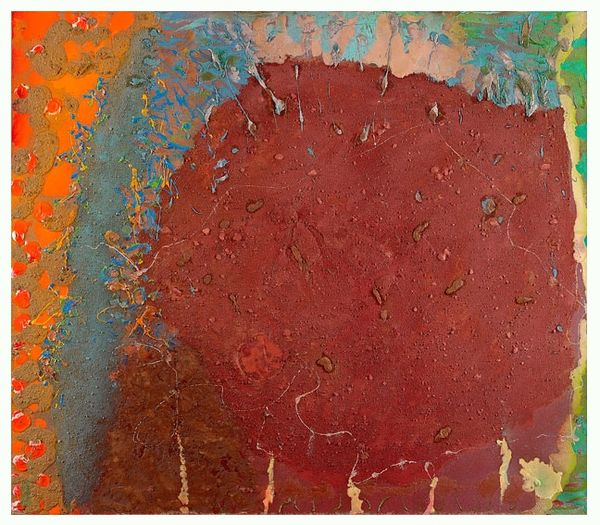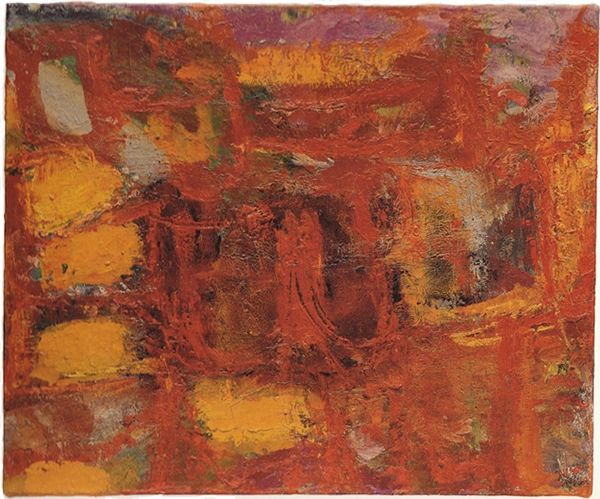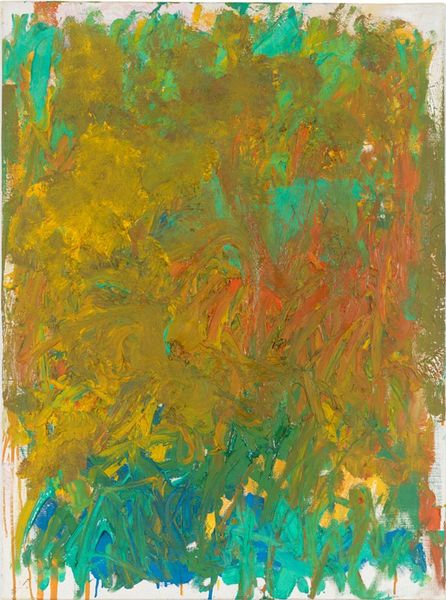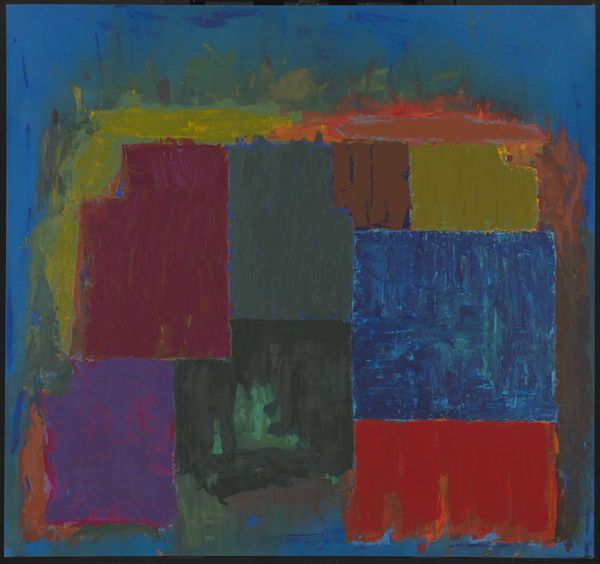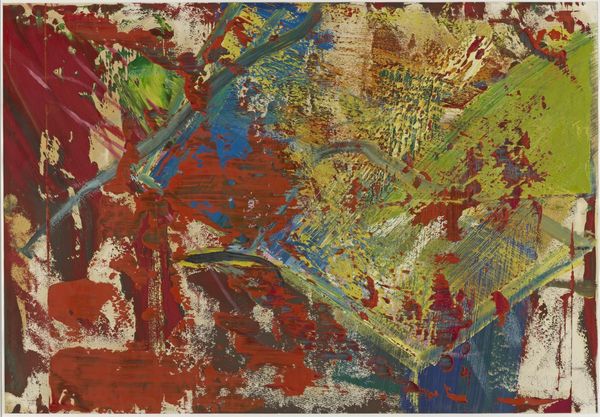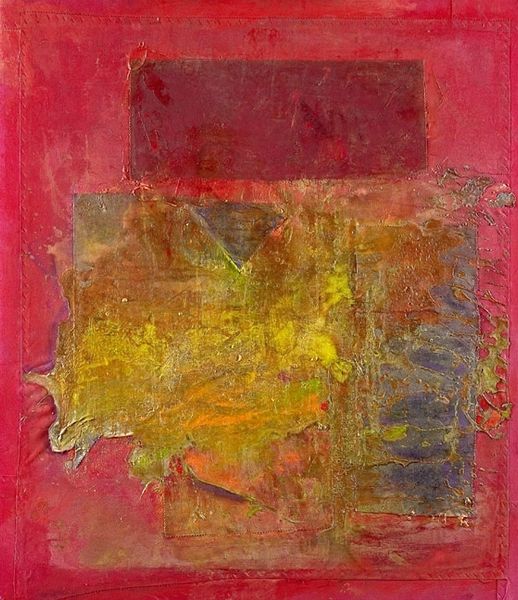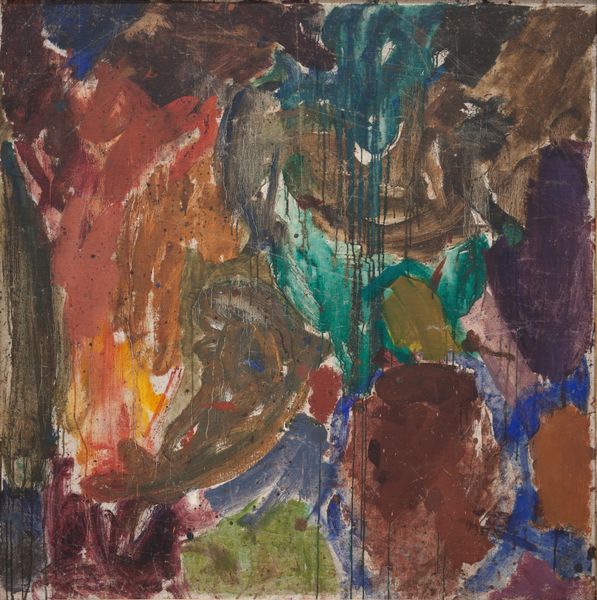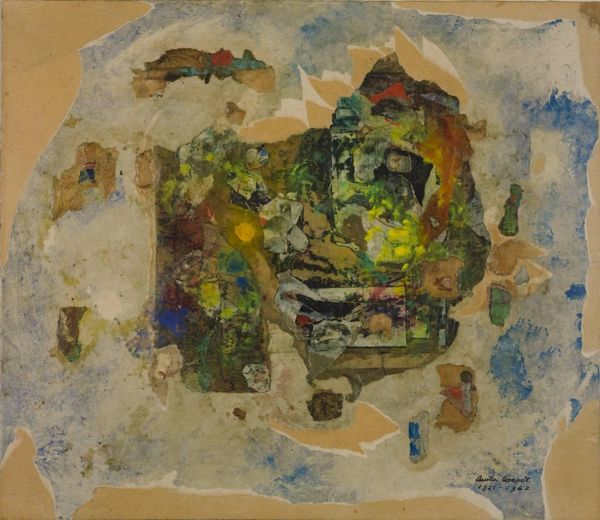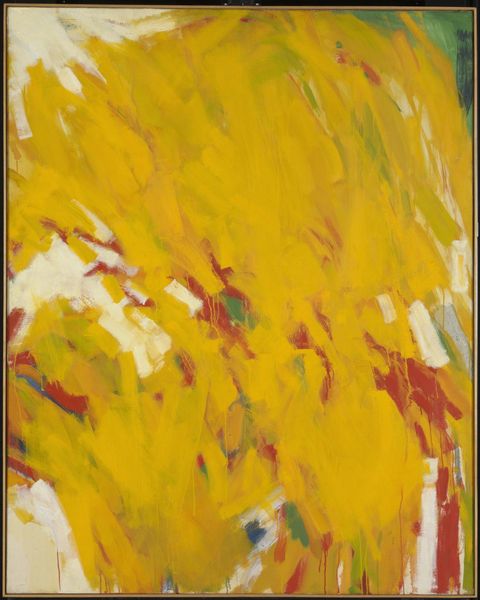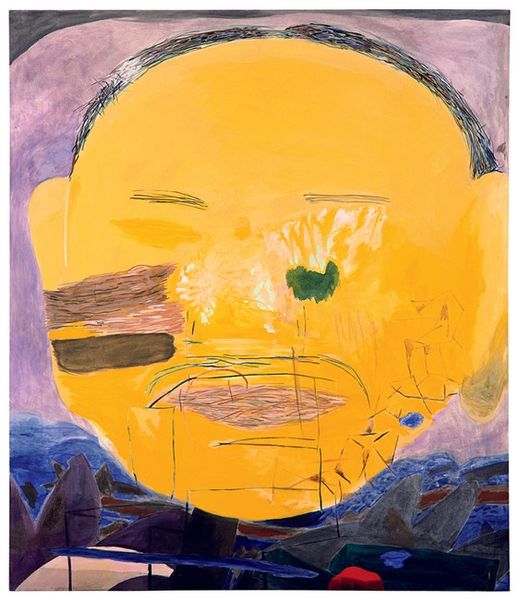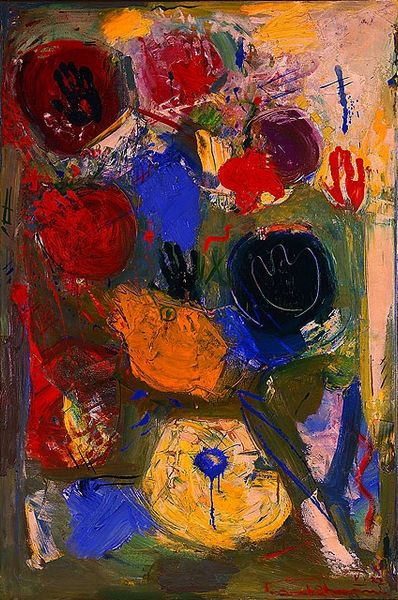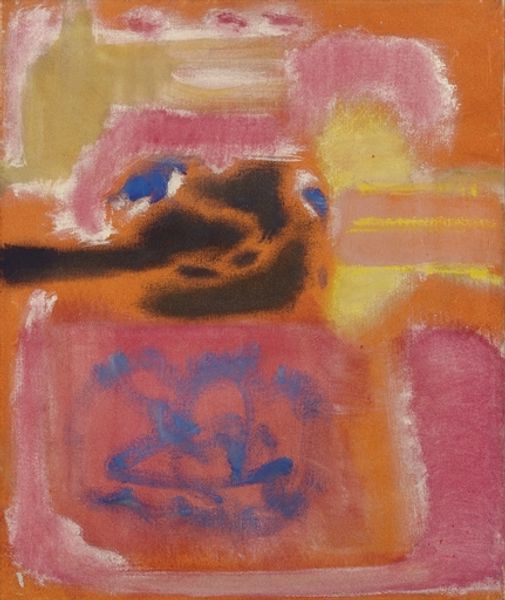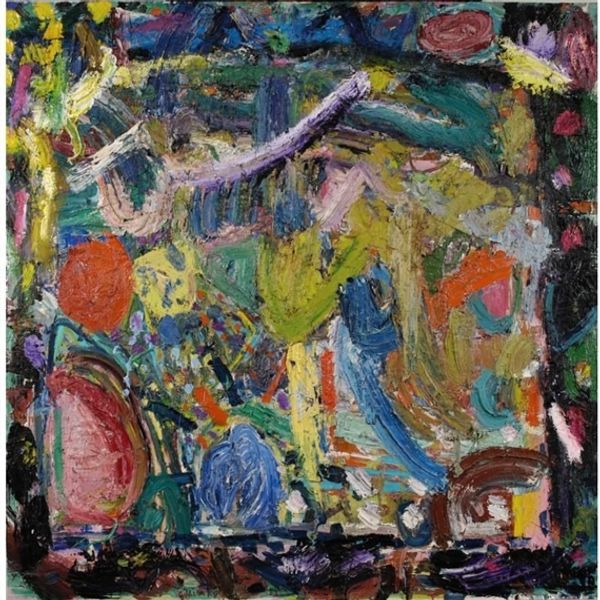
oil-paint
#
oil-paint
#
german-expressionism
#
oil painting
#
geometric
#
expressionism
#
monochrome
Dimensions: 53 x 49 cm
Copyright: Public Domain
Curator: Alexej von Jawlensky's "Still Life with Petroleum Lamp," painted in 1907, resides here at the Städel Museum. Jawlensky, of course, was a key figure in German Expressionism. Editor: My immediate reaction is one of… intensity. The bold color blocks and visible brushstrokes seem almost violently applied, radiating an undeniable energy. It feels emotionally charged. Curator: Indeed. The application of oil paint is far from subtle. Consider how the composition is structured— a rather rudimentary geometric construction. A clear juxtaposition exists between the cylindrical body and dome top against the looser, chromatic field around the lamp. What readings might we offer on the object? Editor: The lamp itself, in this context, seems to be less a functional object and more a symbolic anchor. Petroleum lamps, traditionally, signify domesticity, but given the early 20th century date, a lamp could also signify a turning away from modern advancements. The brushstrokes even give an aura-like sense of it as a sacred object—perhaps representing the lingering warmth of traditional life against modernity. Curator: Fascinating! Look closer, too, at how Jawlensky rejects photographic naturalism for a deeper engagement with form and color. His expressive distortions disrupt traditional perspective, forcing us to reconsider our assumptions about visual representation. You notice that subtle interplay of color and structure, I presume? Editor: Absolutely. The monochrome background seems to purposefully flatten the space, pushing the lamp forward, rendering it almost as a forceful presence. In an art world gradually being bathed in electric light, choosing to paint such a scene invites reflection on change. Curator: Such evocative interpretations of Jawlensky's object. Thank you for joining me. Editor: A pleasure. The painting clearly presents such potent symbolism through such overt formalism—it cannot help but invite inquiry!
Comments
stadelmuseum about 2 years ago
⋮
In his early work, when he was still in search of a pictorial language of his own, Jawlensky studied post-Impressionism in great depth. On his numerous trips to France between 1903 and 1907, he gained manifold artistic impressions which he 'processed' above all in still lifes. One recurring motif is this petroleum lamp. Here it is depicted in an especially sketchy manner with abbreviated strokes of the brush that leave the surface of the paperboard visible in places. The weave of colours, now dense, now loose, vividly illustrates the flickering shine of the lamp.
Join the conversation
Join millions of artists and users on Artera today and experience the ultimate creative platform.
